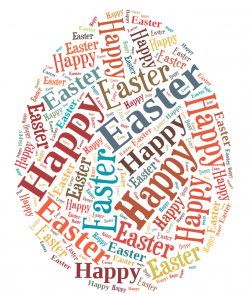Easter is the most important celebration in the Christian calendar. It commemorates the last week of Jesus’s life and celebrates his resurrection on the third day after his crucifixion, as recounted in the Bible. It falls on the first Sunday after the full moon following 21st March (the March Equinox), between March 22nd and April 25th.
Easter Sunday is celebrated in many countries around the world, especially those where Christianity is a state religion, or in countries that have a large Christian population or tradition. As Easter is always on a Sunday, Good Friday and/or Easter Monday are also bank holidays in numerous countries
Easter celebrations have also been influenced by many customs welcoming spring, dating from Antiquity. Eggs, rabbits and hares were symbols representing fertility.
Easter eggs
In the Christian faith eggs symbolize resurrection, new life and renewed faith. In the IV century, the Christian Church forbade Christians to eat eggs during Lent, the forty-day period of fasting preceding Easter, hence the abundance of eggs at Easter time. The eggs that had not been eaten during Lent were decorated and given as a gift. Nowadays, fasting is not as strictly observed as before but the tradition of giving decorated and chocolate eggs persists. In Sweden, Norway, Germany, France and many other countries, people still decorate hard boiled eggs with paint and felt pens. They even use wax in some countries like Hungary, Romania or Slovakia.
In Alsace and in certain regions of Germany, people bake a cake in a shape of a lamb called Osterlammele or Lamala. It used to be a good way to consume the stock of eggs accumulated before Easter.
According to the Guinness World Record website, “the tallest chocolate Easter egg measured 10.39 m (34 ft 1.05 in) and had a circumference of 19.6 m (64 ft 3.65 in) at its widest point and was made by Tosca (Italy). It was measured at Le Acciaierie Shopping Centre, in Cortenuova, Italy on 16 April 2011. The chocolate Easter egg weighed 7,200 kg (15,873 lbs 4.48 oz).”
Click here to check out the egg-cellent Easter achievements listed by the Guinness World Record website.
The Hare
In some countries, and especially Germanic countries, eggs are brought by the hare or Easter bunny, “Osterhase” in German, le “lapin de Pâques” in French.
The Easter Bunny legend originated in Germany. The story tells that a poor woman, who was not able to offer sweets to her children, decorated eggs and hid them in the garden. Her children caught sight of a rabbit in the garden and thought that it had laid the eggs. As a result, each year, for Easter, children make nests and leave them in the garden in hope that the Easter bunny will fill it with eggs overnight.
Another origin of the Easter bunny comes from Saxony, where people used to honour the goddess Ēostre or Ostara. The emblematic animal of the goddess is the hare and it remains associated with Easter. Similarly, in Celtic and Scandinavian traditions, the hare was the symbol of the mother goddess.
Easter bells and fish-shaped chocolates
In Belgium, France and in The Netherlands, it is said that Easter eggs are brought by Easter bells. In times past fewer people had watches and they knew the time thanks to the church bells. Yet the bells stop ringing on Good Friday, on the day Jesus was crucified, as a sign of mourning. They start to ring again on Sunday, on Jesus’s resurrection day. The popular tradition says that bells go to Rome (explaining their silence) and come back on Easter Sunday with Easter eggs.
During Easter, the French chocolateries (chocolate shops) are usually filled with succulent and beautiful chocolates in the shape of eggs and bunnies. Alongside these, French people can also find chocolate bells, which directly correlate with the coming back from Rome at the end of Lent, as well as small fish-shaped chocolates called friture (whitebait) because of their shape. A fish was the symbol of the first Christians.
Traditions around the world
Beside chocolate, Americans eat jelly beans and marshmallow peeps (marshmallow candies shaped into bunnies, chicks and other animals) during Easter. The Easter egg roll on the White House lawn has been a tradition since 1878. The event involves rolling a coloured hard-boiled egg with a large serving spoon, as well as a wide range of entertainments such as music, an egg hunt, sports and crafts.
Easter is one of the most deep-rooted celebrations of Spain, backed by centuries of history and tradition. Easter week, “the Holy week” is celebrated in every city, town and village of Spain although each region of Spain has its own way of celebrating the event. For more information about the Spanish Easter week celebrations, click on Spain’s official tourism portal link.
If you want to find out about Easter traditions in many other countries, I recommend these two articles: Easter Traditions from Around the World and Easter Around The World.



